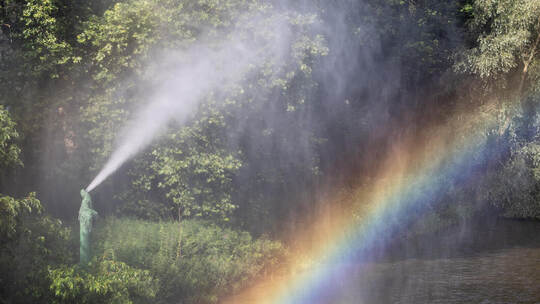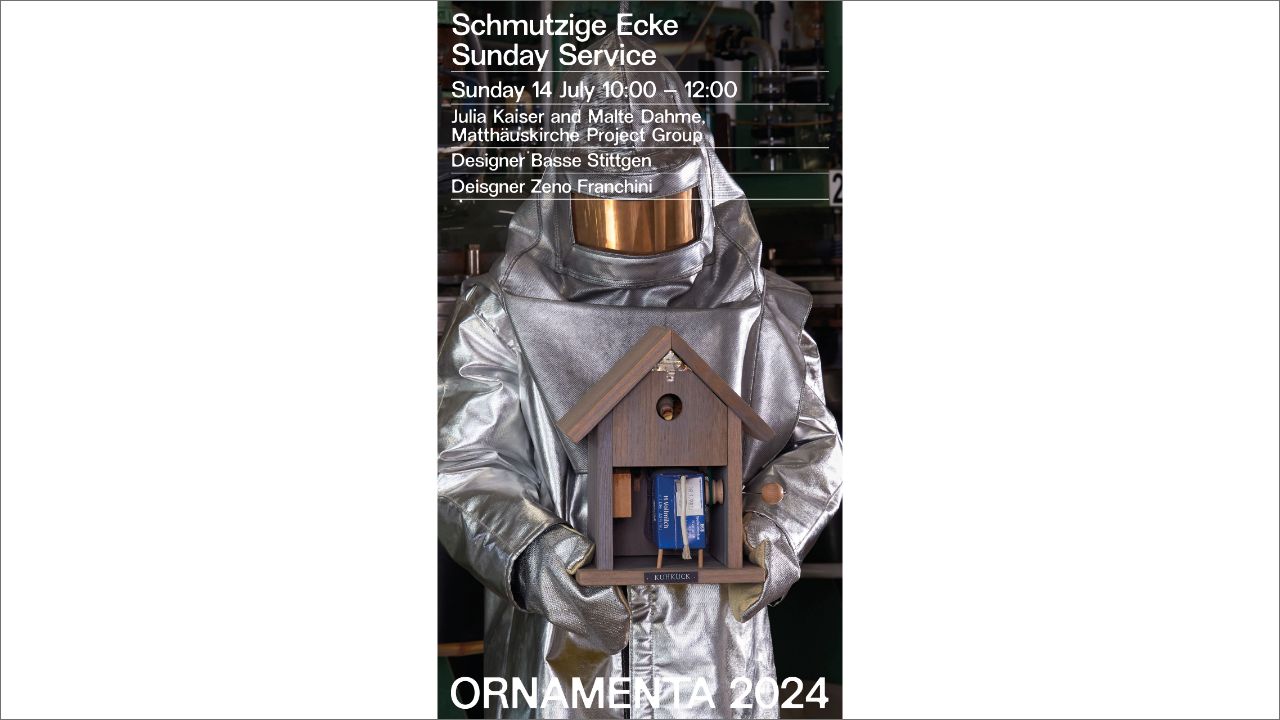What Remains of Ornamenta in Pforzheim?
The recent conclusion of the Ornamenta exhibition in Pforzheim leaves us pondering: what installations will endure in their presence? Although the official event has drawn to a close, a select few artworks will remain on display, conjuring a mysticism that is both captivating and, at times, controversial.
One of the standout installations is the mesmerizing Rainbow Sprayer, nestled along the Enz riverbank. This piece has drawn scrutiny due to its substantial water consumption, prompting critics to question its sustainability. Nevertheless, the installation will remain inactive until July 4, 2025, when it will be revived, accompanied by the very artists who brought it to life. Those curious to witness this silent spectacle can find the sprayer located beneath the island bridge close to the renowned Café Roland.
 The stunning Rainbow Sprayer by Haug, awaiting its revival.
The stunning Rainbow Sprayer by Haug, awaiting its revival.
The Travelling Queer Zine Library: A Space for Identity
Another extraordinary feature of the Ornamenta is the Travelling Queer Zine Library, a carefully curated collection that delves into themes of diversity, self-determination, and sexual identity. Libraries across the region will have the privilege of utilizing this vibrant assembly of Zines, fostering dialogue and understanding within the community. This initiative is more than just a collection; it embodies a movement toward inclusivity. The idea that literature can become a vehicle for expression and recognition is revolutionary. It supports marginalized voices, inviting everyone to engage in conversations about identity.
An initiative promoting inclusivity and self-expression.
Challenging Perceptions: The Sundials
The sundials included in the exhibition are a fascinating commentary on contemporary perceptions of time. They depict only a partial picture of our daily lives, capturing a fleeting window from 9 AM to 5 PM—mirroring the standard working hours that define many Western societies. This artistic choice compels us to reconsider our relationship with time. Are we merely slaves to a clock, or can we perceive time more fluidly? Found at the courthouse square in Nagold, the station square in Mühlacker, and Leopoldplatz in Pforzheim, these sundials are beckoning us to rethink how we measure our days.
Artistry that challenges our conventional understanding of time.
The Ziegelgarten Mühlacker: Nature Meets Art
The Ziegelgarten Mühlacker, featuring the outdoor pool of the former Emma-Jaeger baths, illustrates a harmonious blend of art and nature. This public artwork occupies a unique intersection between a construction site and a serene landscape, creating spaces for effortless social interactions while providing sanctuary for local flora to flourish undisturbed. Situated at Eurofins site, Vetterstraße 36, this project highlights a commitment to ecological integrity, inspiring us to appreciate the innate beauty of our environment.
A merging of art and nature in the Ziegelgarten.
The Future of the Black Ball
As the dust settles on the Ornamenta, several artworks remain in limbo. The fate of the Black Ball installation is still under discussion, with local authorities contemplating its future. Additionally, projects such as Shelving Seasons, featuring a liquid cherry cake, and the Solar Salon are set to make their way to biennials in Portugal and Switzerland, showcasing Pforzheim’s talents on an international stage.
Art must not only reflect our past but also inspire our future. As we bid farewell to the latest installment of the Ornamenta, we should take stock of its legacy. What will become of these thought-provoking pieces? Will they merely fade into memory, or will they evolve alongside our culture, continuing to challenge and engage us?
It’s up to us, the observers and participants of this vibrant tapestry of art, to ensure that the dialogues sparked by these works endure well beyond their physical presence.
Envisioning the ongoing impact of art in our lives.


 Photo by
Photo by 











